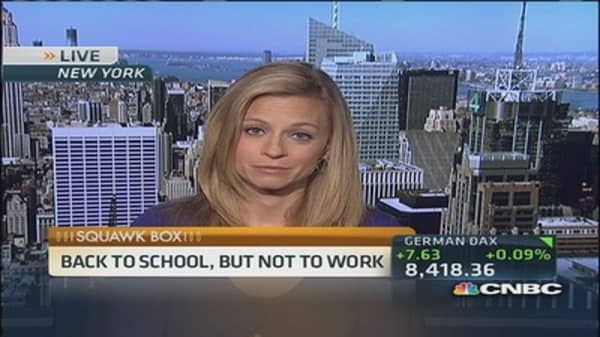"The vacancy rates in outlet malls right now are running about 5 percent," while vacancy rates on the traditional retail side are "somewhere between 10 and 15 percent," said Ken Lombard, a partner at Capri Capital Partners. "The retailers that are a part of these outlet malls are seeing more success in terms of sales."
'Back-to-school Saturday'
That's why some are hoping promotions and events may draw teenagers back to the mall.
Saturday marks the second annual "Back-to-School Saturday." Fifty shopping centers owned by Simon Property and 20 owned by General Growth Properties are participating in the event, created by Teen Vogue.
Organizers say 45,000 stores throughout the country will be offering promotions. Social media will also play a role, with activated ads and editorial features promoted on Facebook, Instagram and Twitter.
Some retail industry analysts said that they expect consumers are timing their shopping trips more carefully.
(Read more: Lessons to watch for in Wal-Mart, Macy's earnings)
In a note to clients, Jefferies analyst Daniel Binder said that although the industry had a slowdown in sales after Father's Day, he doesn't see it as the beginning of a downward trend.
"We think the consumer has a propensity to shop closer to need," Binder said. "We have seen this in many instances since the Great Recession, and we only have to look to first quarter and early second quarter to see when it happened last. We may witness this again as consumers shop late for back-to-school."
That could mean big-box retailers like Walmart and Target may be able to sell school supplies and backpacks before new sneakers and fall jackets make their way to the checkout lane.
—By CNBC's Courtney Reagan. Follow her on Twitter @CourtReagan.






